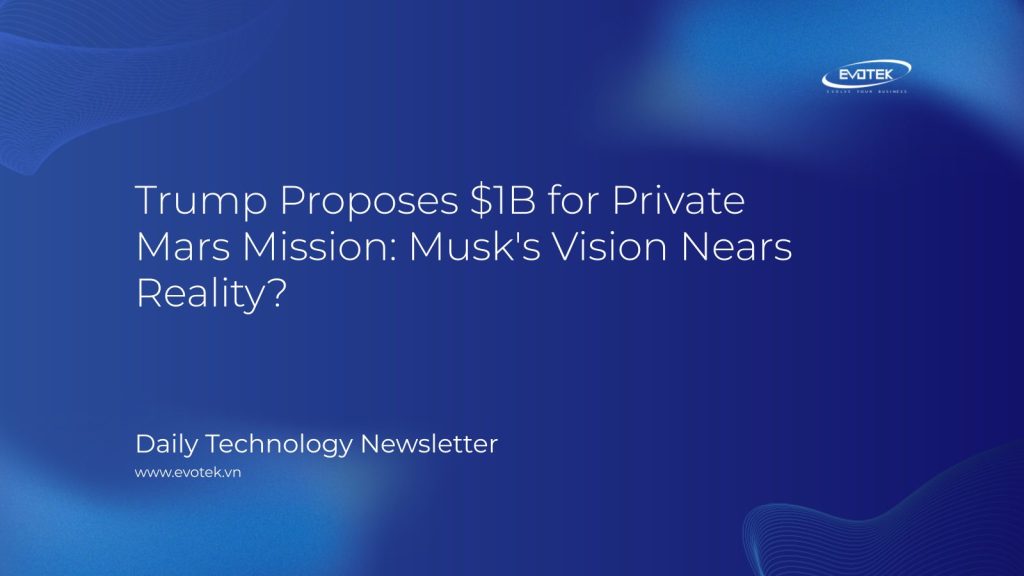Former U.S. President Donald Trump is pushing for a bold initiative to leverage the private sector in the pursuit of human missions to Mars. The proposal closely mirrors the ambitions of SpaceX CEO Elon Musk.
White House Budget Prioritizes Mars Exploration
The White House’s proposed 2026 budget, unveiled late Friday, earmarks over $1 billion for Mars exploration. A key element of this plan is a new NASA program: the Commercial Mars Payload Services Program (CMPS).
CMPS: Fostering Private Sector Innovation for Mars
Under the CMPS, NASA would award contracts to private companies focused on developing essential technologies for Mars missions. This includes:
- Advanced spacesuits
- Reliable communications systems
- A human-rated landing vehicle
The goal is to stimulate private sector innovation and accelerate the timeline for human exploration of the Red Planet.
Budget Cuts Elsewhere at NASA
While prioritizing Mars, Trump’s proposed $18.8 billion NASA budget represents a significant reduction—approximately 25%—from the previous year. These cuts primarily target NASA’s science portfolio.
“We must continue to be responsible stewards of taxpayer dollars,” stated NASA Acting Administrator Janet Petro. “That means making strategic decisions—including scaling back or discontinuing ineffective efforts.”
A Model Based on Lunar Success?
The CMPS program draws inspiration from NASA’s Commercial Lunar Payload Services (CLPS) program, which has supported companies like Intuitive Machines, Firefly Aerospace, and Astrobotic Technology. While CLPS has seen mixed results, it serves as a framework for fostering private-public partnerships in space exploration.
SpaceX’s Starship and Musk’s Mars Dream
The contract for a Mars lander would build upon existing lander contracts, potentially benefiting SpaceX. Musk’s company is actively developing its Starship rocket, designed to transport humans to the Moon under NASA’s Artemis program. Musk has also outlined an ambitious vision for establishing a large-scale settlement on Mars.
Controversy and Congressional Pushback Expected
Trump’s nominee to lead NASA, tech billionaire Jared Isaacman, has suggested that the agency can pursue both lunar and Martian objectives simultaneously. However, the proposed budget cuts, particularly those impacting NASA’s science programs, have drawn criticism from within the space industry and from lawmakers. Even Isaacman himself has acknowledged that the science cuts would not be an “optimal outcome.”
The budget also proposes phasing out the Boeing-built Space Launch System rocket and the Lockheed Martin Corp. Orion crew capsule after three flights. Instead, the administration envisions new, private sector-led missions to the Moon, aiming to reduce costs and minimize schedule risks. This approach mirrors the NASA program that fostered the development of SpaceX’s Falcon 9 rocket and Northrop Grumman Corp.’s Cygnus cargo spacecraft.
The budget proposal is expected to face resistance from key members of Congress, including Texas Republicans Sen. Ted Cruz and Rep. Brian Babin, who have staunchly defended the existing plans for returning to the Moon.

 日本語
日本語 한국어
한국어 Tiếng Việt
Tiếng Việt 简体中文
简体中文